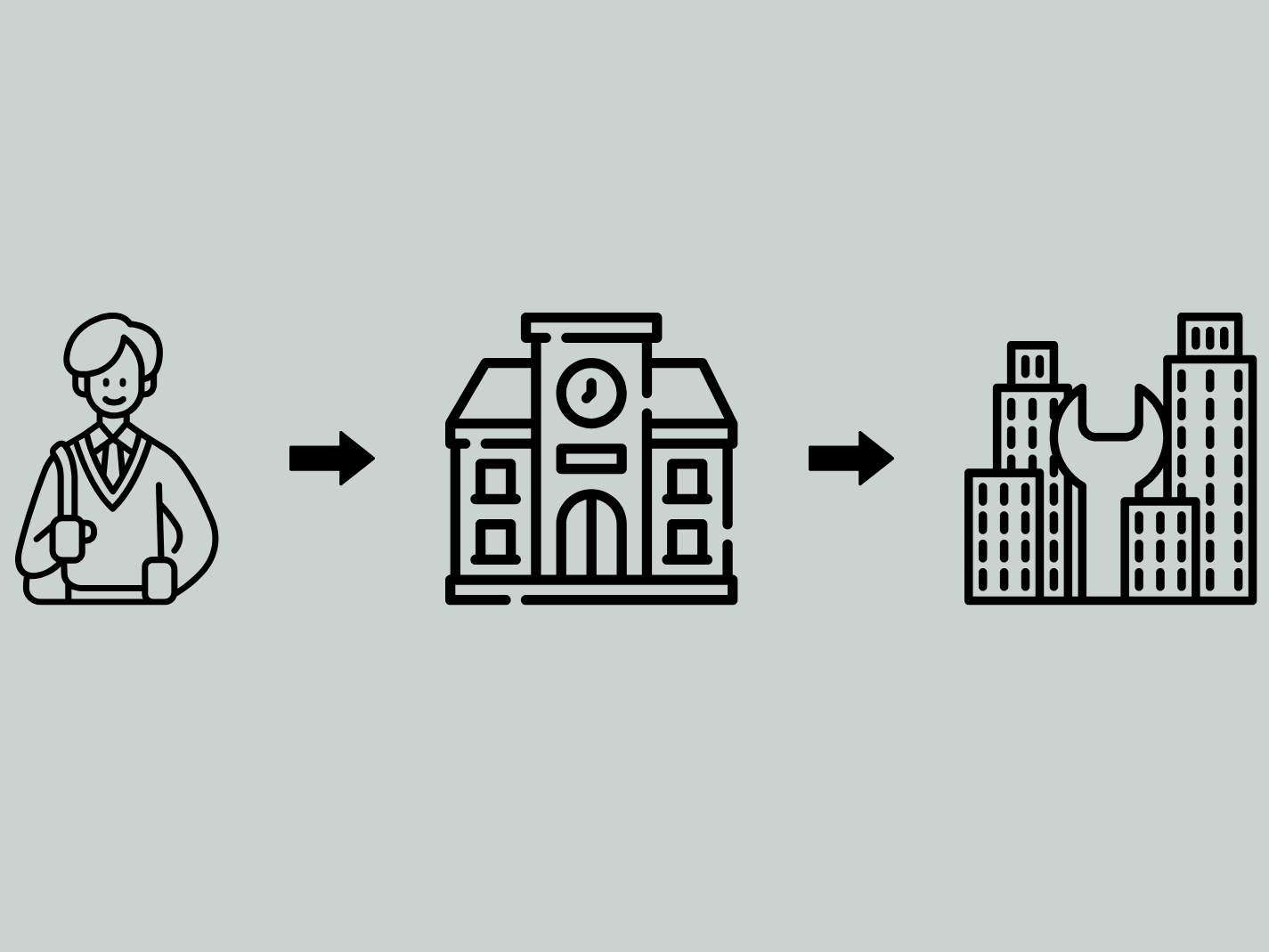
Author’s Note: This excerpt is from my weekly “Top of Mind” email, sent to subscribers every Thursday. For more content like this and to receive the full newsletter each week, sign up on Minding the Campus’s homepage. Simply go to the right side of the page, look for “SIGN UP FOR OUR WEEKLY NEWSLETTER, ‘TOP OF MIND,’” and enter your name and email.
The H-1B debate remains a hotbed of confusion, particularly among its advocates, who seem unclear about the program’s actual purpose and its troubling connection to higher education.
Let’s clear things up: the H-1B visa is not a fix for labor shortages, and our higher education system is actively feeding the foreign labor pipeline. This has to stop.
Introduced as part of the Immigration Act of 1990, the program was ostensibly designed to fill gaps in fields like technology, engineering, and medicine. (This is likely why many of my cardiologists are foreign nationals.) But whatever the intention behind the H-1B program was, it has long been distorted into a tool for corporate exploitation.
[RELATED: My Surgeon Might be a Diversity Hire!]
Instead of ensuring foreign workers only fill positions that demand specialized skills when qualified Americans aren’t available, the program has become a profit-driven loophole that displaces American workers while exploiting foreign nationals under conditions that leave them with little recourse.
Sean M. O’Brien, writing for the Washington Examiner, noted as well that many H-1B workers don’t even meet the specialized skill requirements the program supposedly enforces. His analysis holds up—between 2022 and 2023, the largest companies using H-1B laid off 85,000 American workers, all while hiring over 34,000 foreign guest workers. Tesla, for example, laid off 10 percent of its workforce all while seeking nearly 1,000 H-1B workers. (That’s quite the turnaround for Musk, who led the anti-immigration debate during Trump’s campaign.) Meanwhile, millions of Americans with advanced STEM degrees remain sidelined.
And, if the H-1B program is truly about filling critical gaps in technology, engineering, and medicine, why are we employing foreign nationals as dog trainers, massage therapists, cooks, lawyers, and English teachers? Are we really facing a nationwide shortage of qualified English teachers? (Ironically, English proficiency isn’t even a requirement for an H-1B visa worker.) Even Panda Express has gotten in on the act, hiring foreign workers for roles that hardly scream “specialized expertise.”
Proponents of the H-1B program continue to argue, however, that the influx of foreign labor is the answer to the inadequacies of American higher education.
According to this view, native-born graduates are unemployable because colleges and universities that would otherwise qualify students for the workforce prioritize leftist ideologies over practical skills. Employers, frustrated by graduates who may excel at identifying microaggressions but lack foundational knowledge, claim that “diversity, equity, and inclusion” (DEI) initiatives have supplanted merit, leaving them with no choice but to seek foreign talent. (Critiques of higher education aren’t without merit. American colleges and universities have indeed been churning out graduates who are woefully unprepared for the demands of the workforce).
But if America’s higher education system is really so deficient, how do we explain that many H-1B workers graduated from the same institutions? Does anyone buy the narrative that foreign students somehow dodge mediocrity while earning the same degrees as their American peers? Employers clearly don’t care about the merits or rigor of one’s educational experience. They just want cheaper labor.
As I pointed out last week, our educational institutions share in the blame. Many H-1B workers begin their journey to the United States on student visas, pursuing degrees—primarily in STEM fields—that ultimately serve as a springboard to H-1B sponsorship.
Higher education institutions actively recruit foreign students, namely from India, to bolster tuition revenue, elevate their global prestige, and check DEI boxes. In doing so, they create a pipeline of foreign nationals for employers to exploit, sidelining qualified American graduates in the process.
The contradiction is glaring: critics claim that American colleges are failing to prepare students for the workforce adequately, yet these same institutions are producing a steady stream of highly qualified H-1B candidates. This doesn’t add up. Supporters of the current system are either misunderstanding it, avoiding critique of American business—perhaps to avoid seeming too anti-capitalist—or acting in bad faith. I suspect those with ties to the tech lobby fall into the latter category.
[RELATED: Debate Over H-1B Visa Highlights Failures of U.S. Higher Education]
The solution lies in ensuring American educational institutions strike a balance in prioritizing American citizens while serving national interests. Foreign students from allied nations who share our values and demonstrate genuine potential to contribute to America’s success may have a place here. But colleges and universities must focus on admitting more Americans, not prioritizing foreign tuition revenue—particularly when those foreign students hail from adversarial nations.
In the end, both American corporations and universities must put civic responsibility first. And, if we really want to compete globally, our education systems must better prepare students to excel in fields like STEM and create more opportunities for native talent.
Follow Jared Gould on X
Image design by Jared Gould using assets in Adobe Express

There’s another side of this: higher education fuels corporate profits at the expense of Americans in general.
Baseball has an extensive farm system where it spends considerable money training and developing potential ballplayers for the major leagues. Not everyone makes it, and the team has to absorb the expense of those players who don’t.
Compare this yo the NBA and NFL who have colleges paying for this expense.
The same thing happens with higher education in general — where a corporation would once hire and train three people for one position, accepting the fact that it would lose money on the two it didn’t keep in order to obtain the third (like baseball)., it now relies on higher education to get rid of the other two candidates at their expense.
I don’t think that the ethical issues of this have ever truly been sorted out.
“foreign students (who subsidize American students).”
It’s the other way around — American undergrads and American taxpayers are receiving inferior instruction from foreign TAs who can’t speak comprehensible English.
This is another ridiculous attack on American STEM education and research. There is no lack of education opportunity for well-qualified American students. No, that doesn’t preclude from also educating foreign students (who subsidize American students).
H1B is not a conspiracy between American higher STEM ed and capitalism. The conspiracy is between business and Congress. The problem can be fixed by stopping allowing business from treating H1B workers as indentured caste members. It has little to do with higher education being in on the exploitation.
You apparently know nothing about the H1-B visa program. At my university we have foreign students (Indian) who come to get engineering graduate degrees. They do that on a student visa. Well, once you graduate, the student visa expires shortly thereafter. Yet many of these students get positions at high tech companies and work for three to five years. And then, suprise, suprise, suprise, many apply for green cards!! Gee, I wonder what kind of visa allows them to work in the U.S. after graduation.
And bear in mind, every one of these ex-students who does this holds a job an American won’t hold.
The university knows the students are doing this and raise no objection. After all, it helps maintain the student enrollments.
Wise up.
And how good are the foreign students as teachers???
Your beef, if you have one, is with the federal immigration policies — not with the unive rsities.
You make the fallacy of the zero sum game.
The likes of Reagan knew that.
Jonathan, who runs the H1-B visa program???
” The problem can be fixed by stopping allowing business from treating H1B workers as indentured caste members.”
So instead of coming here for a specific job, you would let them come here to take ALL the jobs?!? We’d quickly wind up with the number of H1B visa holders exceeding the number of jobs, wages further depressed, and ALL Americans unemployed.
That would not be an improvement.
Now as to a “prevailing wage” law — setting minimum wages for employing visa holders, that WOULD work. Sure you can hire a H1B visa holder, you just have to pay 110% of what you would pay an American. And perhaps an European-style tax to support K-12 education as well.
You assume that American workers are so feeble that in a free market, foreigners would get all the jobs. That is a pathetic view of Americans.
I happen to know from quite a lot of experience that in a free market for professionals, everything equal, the American will get the job. Even a Canadian is at an advantage (slight).
If America were really great, or becoming great again, it would be like the country of old. When we competed for the best in the world. And boosted the American opportunity pie.
We were happy to get the likes of Einstein, John von Neumann, Fermi. C.N. Yang a little later.
Hell, even Trump is associating with the likes of Elon Musk. He and Jensen Huang I know something about the opportunity pie, having made some nice money with the last.
Jonathan, Ross Perot was right about that “giant sucking sound” and if you have ever been at a PUBLIC university where the lowest bidder gets the contract, you will have seen price replace quality.
Although you probably wouldn’t mind seeing the 13th Amendment repealed.